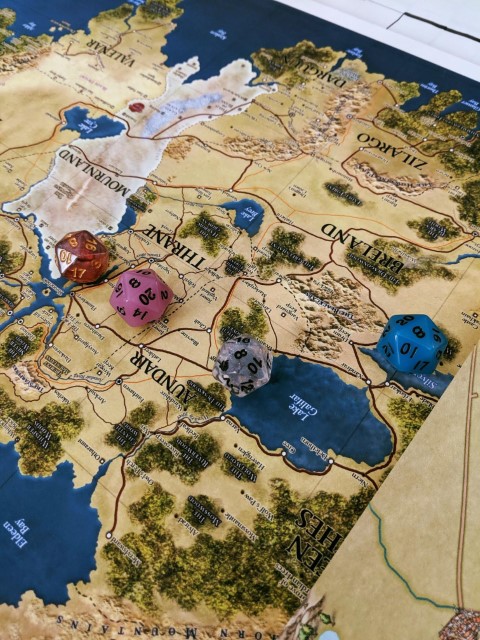Brandon Sanderson, celebrated for his exceptional worldbuilding and intricate magic system design, stands out as a titan in modern fantasy literature. His principles, while crafted for literary creation, offer invaluable insights for TTRPG design. In an era brimming with new TTRPG systems being developed and crowdfunded, I frequently ponder how Sanderson’s concepts could shape better game design, or at least preserve a diversity in gaming experiences rather than yet another play on heroic-fantasy without risk of failure. Specifically, I contemplate the potential of these foundational ideas to captivate players through effective game design—a crucial aspect often missed in the foundational design of many emerging games.

Sanderson’s Guidelines for Creating a Compelling Magic System
- An author’s ability to resolve conflicts with magic is directly proportional to how well the reader understands that magic.
- Weaknesses, limits, and costs are more intriguing than powers.
- Authors should first expand on existing elements of the magic system before adding entirely new aspects, as these could significantly alter how the system integrates into the fictional world.
I often reflect on this in relation to TTRPG system design, especially given the influx of new systems that emphasize powers and abilities, downplaying failure as a core aspect of Heroic Fantasy. This trend seemed to gain momentum during the 5e D&D era, as the notion that any form of failure was undesirable began to surface in online discussions. However, I believe this line of thinking leads to uninspired and uninteresting game design.
The Heroic Fantasy Conundrum
We’re in an era of evolving TTRPG landscapes, marked by a trend of assuming powers and minimizing the role of failure. It seems like everyone wants to be Hercules without the trials and tribulations. This shift, gaining traction in the 5e D&D era, rendered the concept of failure almost taboo in some gaming circles.
It’s important to note that Heroic Fantasy traditionally involves risks and the possibility of failure. The recent shift away from these elements is a modern deviation, but let’s not get sidetracked by that right now.
The best tales are spun from sacrifice, struggle, and the looming threat of defeat. These elements are the lifeblood of drama, action, and even comedy. So, how do we craft TTRPG systems that embrace these aspects?
Creating Worlds That Thrive on Challenge
A well-designed TTRPG is more than just rolling dice and casting spells. It involves creating engaging group gameplay and weaving a narrative rich with compelling storytelling elements – be it risky decisions, character flaws, or facing daunting obstacles. The tension arising from these interactions is what elevates a game, and systems designed to leverage these elements can foster some of the most rewarding experiences at the gaming table.
Optional Rule’s Guidelines for Creating a Compelling TTRPG
- The depth of a player’s immersion is a function of how well the system fosters meaningful interactions within the game world.
- The best TTRPG experiences arise from grappling with limitations, creatively offsetting weaknesses, and skillfully navigating the ever-present risk of failure.
- A compelling system is captivating through the intricate interplay of existing subsystems, rather than through the addition of new ones.
There isn’t just one way to design a good TTRPG, and it seems we’ve lost sight of that. In a race to create the most ‘heroic’ designs, the importance of struggle and success as core elements of good game design has been overlooked. There should still be room in the hobby for systems that embrace these challenges. Being overshadowed by ‘easy-mode’ systems, where players never fail, isn’t beneficial for the hobby. I hope more designers will consider these guidelines in their creations, and I also hope the community discussion will acknowledge the importance of this type of system design, recognizing the need for a variety of philosophies in game design.